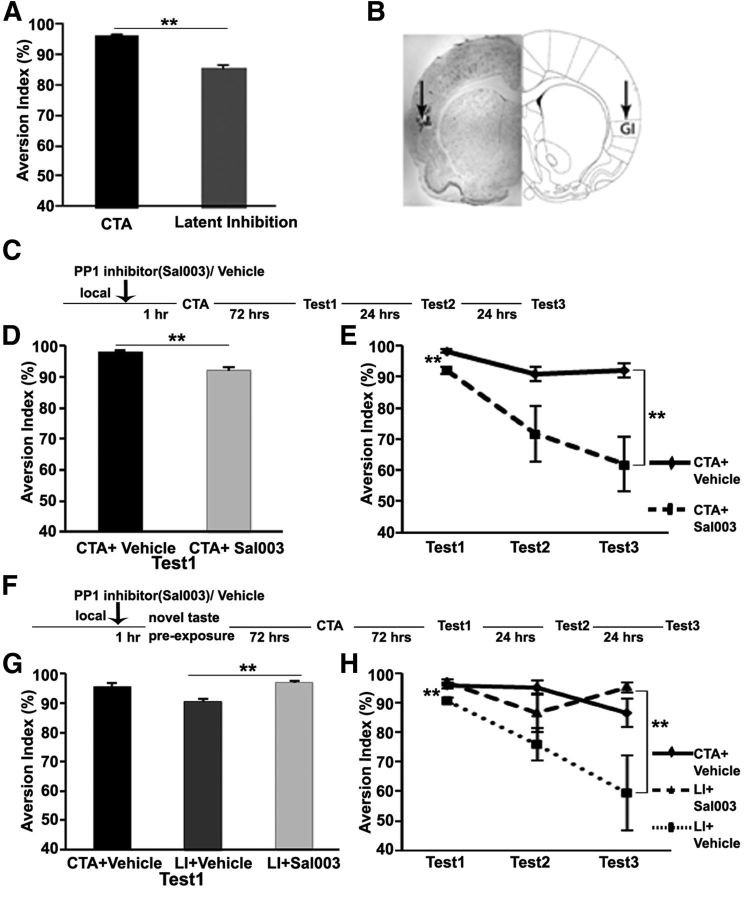Figure 2.
eIF2α dephosphorylation (Ser51) is necessary for long-term taste memory. A, A typical result of CTA and LI of CTA experiments. LI rats show lower aversion rates than CTA rats (n = 9). **p < 0.001. B, A representative slice with Nissl staining shows the position of the cannula and the injection site. GI, Granular insular cortex. C, Outline of behavioral procedures designed to examine the hypothesis that reduction of the phosphorylation level of eIF2α is necessary for CTA. D, PP1 inhibitor (Sal003) microinfusion 1 h before CTA results in a lower aversion index for saccharin on the first test day (n = 5). **p < 0.01. E, Microinjection of Sal003 1 h before CTA results in lower aversion rate for saccharin than in vehicle-injected rats for three consecutive test days (n = 5). **p = 0.01. F, Outline of behavioral procedure designed to examine the hypothesis that reduction of the phosphorylation level of eIF2α is necessary for long-term taste memory. G, Local application of PP1 inhibitor, Sal003 into the GC 1 h before novel-taste before exposure results in higher aversion levels, similar to those in the CTA group and different from those in the vehicle group (n = 5). **p < 0.01. H, Microinjection of Sal003 into the GC 1 h before novel taste before exposure results in higher saccharin aversion rate than in vehicle-injected rats for three consecutive test days (n = 5). **p < 0.01. Data are mean ± SEM.

